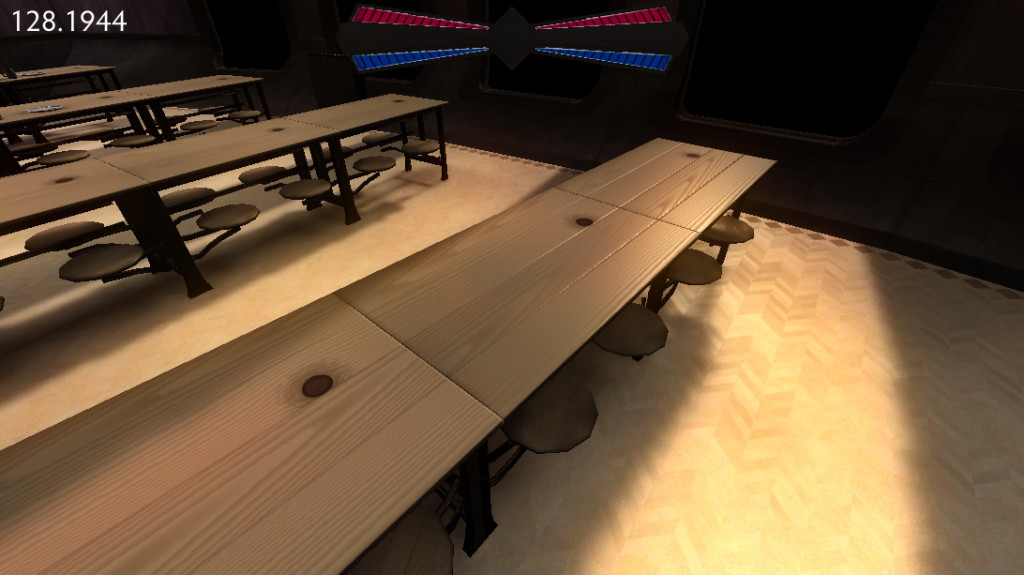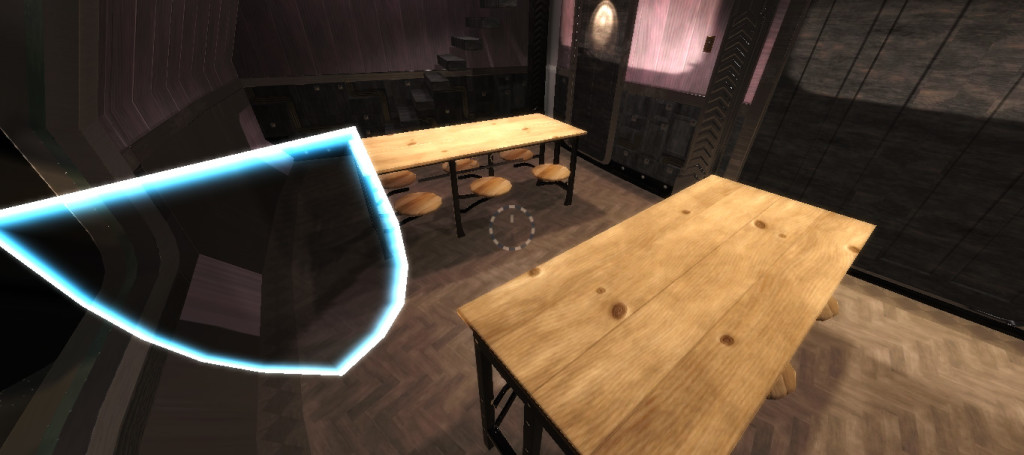Before this, I was using texture nodes in Blender. To give you an idea of the level of quality I was able to achieve with those, here are some cafeteria tables with Blender textures that involved hours and hours of tweaking, over the course of several months:
And this is what I’ve replaced them with, just playing around with Substance Painter over a couple of free evenings:
I find the new wood table textures just… better. More realistic, more detailed… and they took very little effort to make and customize.
I probably should have gotten this a lot sooner. The cost is minimal, and the results are wonderful.
* * *
Procedural pine wood surfaces are a solved problem. I’m not the first person to want an unfinished wood cafeteria table in a video game.
And yet, when confronted with any problem — how do I make convincing procedural wood, how do I make this music sound more nautical, how do I make a wormhole you can walk through — my first question is, how do I solve this problem?
My first question should be, has someone else already solved this? And most of the time, the answer will be yes. Sometimes I’ll have to pay for someone else’s solution, but most of the time, it’s totally worth it.
These problems are solved.
* * *
Sometimes, I think of myself as a sort of lone pioneer, exploring new ground: the sort of game I want to make has never been made, to my knowledge, and certainly not by a single developer. However, the whole ‘lone wolf’ thing is entirely inaccurate. First of all, I get a huge amount of input from my wife and my brother, who are at times more opinionated about the nature of my wacky 1920s-but-not-really, sci-fi-but-not-really universe than I am.
And secondly, I’m not here to fashion bespoke solutions to every problem that comes my way. I am, increasingly, using other people’s tools and libraries to finish this project — which I see as giving me more independence, not less. I’m here to try to solve some very specific problems: how do I craft puzzles that teach you about characters rather than impersonal systems; how do I set up situations where I’ve loaded up simple player actions with piles of emotional context.
Realism in texturing is not one of these problems. I have nothing to add to the field of realistic texturing.
* * *
So I want to focus more on picking my battles, which in many ways means finding more tools that will help me. I’ve already got a third-party character modeling and animation system I like. I’ve now got a texturing system I like. I may, in the future, start looking for a way to auto-generate 1920s style, hand drawn and lettered posters and signs, rather than hand-drawing everything myself. I am capable of doing hand lettered signs. That doesn’t mean I should do it here.
And hopefully, this will all let me give my characters and story the attention they deserve. Those are the most important problems I need to solve here.

